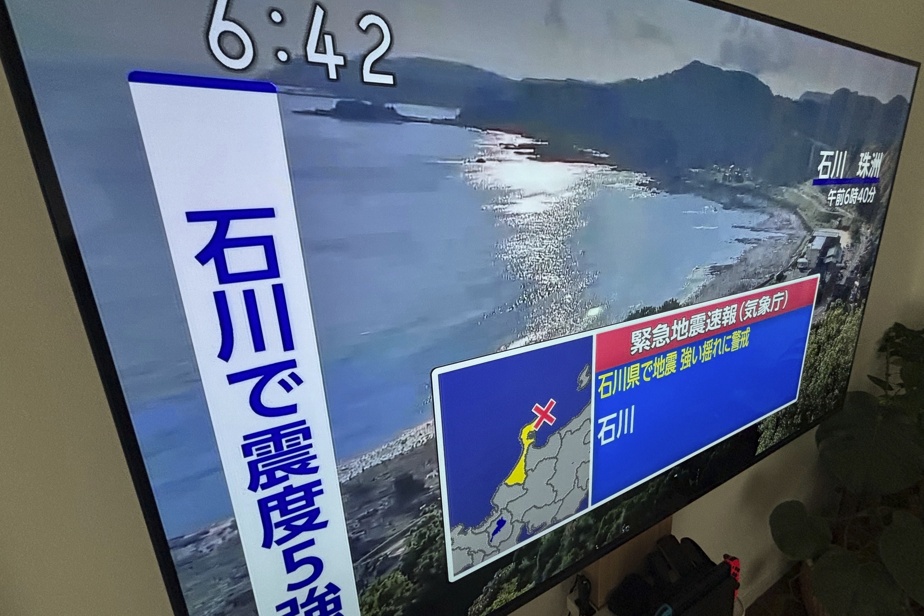(Tokyo) A powerful earthquake with a magnitude of 5.9 struck Monday morning a peninsula in central Japan devastated by a previous violent earthquake on the 1er January, but without causing a tsunami or causing significant damage this time.
The quake occurred at 6:31 a.m. (5:31 p.m. Eastern time Sunday), according to the Japan Meteorological Agency (JMA), at the tip of the Noto Peninsula.
This same area, mainly rural and bordering the Sea of Japan, was the epicenter of the New Year’s earthquake which caused the death of more than 260 people.
The authorities reported three collapsed houses on Monday mid-morning, without reporting any casualties.
Public broadcaster NHK showed images of at least one house with badly damaged walls and tiled roof partially on the ground.
No anomalies have been detected in the country’s nuclear power plants, assured government spokesperson Yoshimasa Hayashi.
Multiple aftershocks occurred, including a 4.8 magnitude tremor ten minutes after the first.
“The area has been subject to seismic activity for more than three years, including the 7.6 magnitude earthquake of 1er January of this year. This is expected to continue for the near future, so continue to exercise caution,” the JMA said on its website.
The agency also reiterated the dangers that landslides and rockfalls can cause in this region, risks reinforced by rain and earthquakes.
The New Year’s earthquake destroyed a large number of homes and infrastructure in Noto, at a time when families were gathering to celebrate the transition to the year 2024.
Thousands of shocks per year
At the crossroads of several tectonic plates along the Pacific “Ring of Fire”, Japan is one of the countries with the most seismic activity in the world.
Thus, 2,227 tremors of intensity 1 or greater on the Japanese Shindo scale (seismic intensity) were felt in the archipelago in 2023, including 19 earthquakes of magnitude equal to or greater than 6.0 according to the JMA.
The vast majority of these earthquakes are benign and even the strongest generally cause little damage, thanks in particular to the application of extremely rigorous anti-seismic construction standards in the country. The Japanese are also very aware of emergency measures in the face of natural disasters.
However, many buildings – particularly in rural areas such as Noto – are dilapidated and therefore vulnerable to powerful earthquakes.
The most powerful earthquake ever recorded in Japan, a country of 125 million people, was a magnitude 9 earthquake in March 2011 off its northeastern coast, which triggered a tidal wave that caused around 20,000 dead or missing.
This tsunami also caused the Fukushima nuclear accident, the most serious in the world since Chernobyl in 1986.
